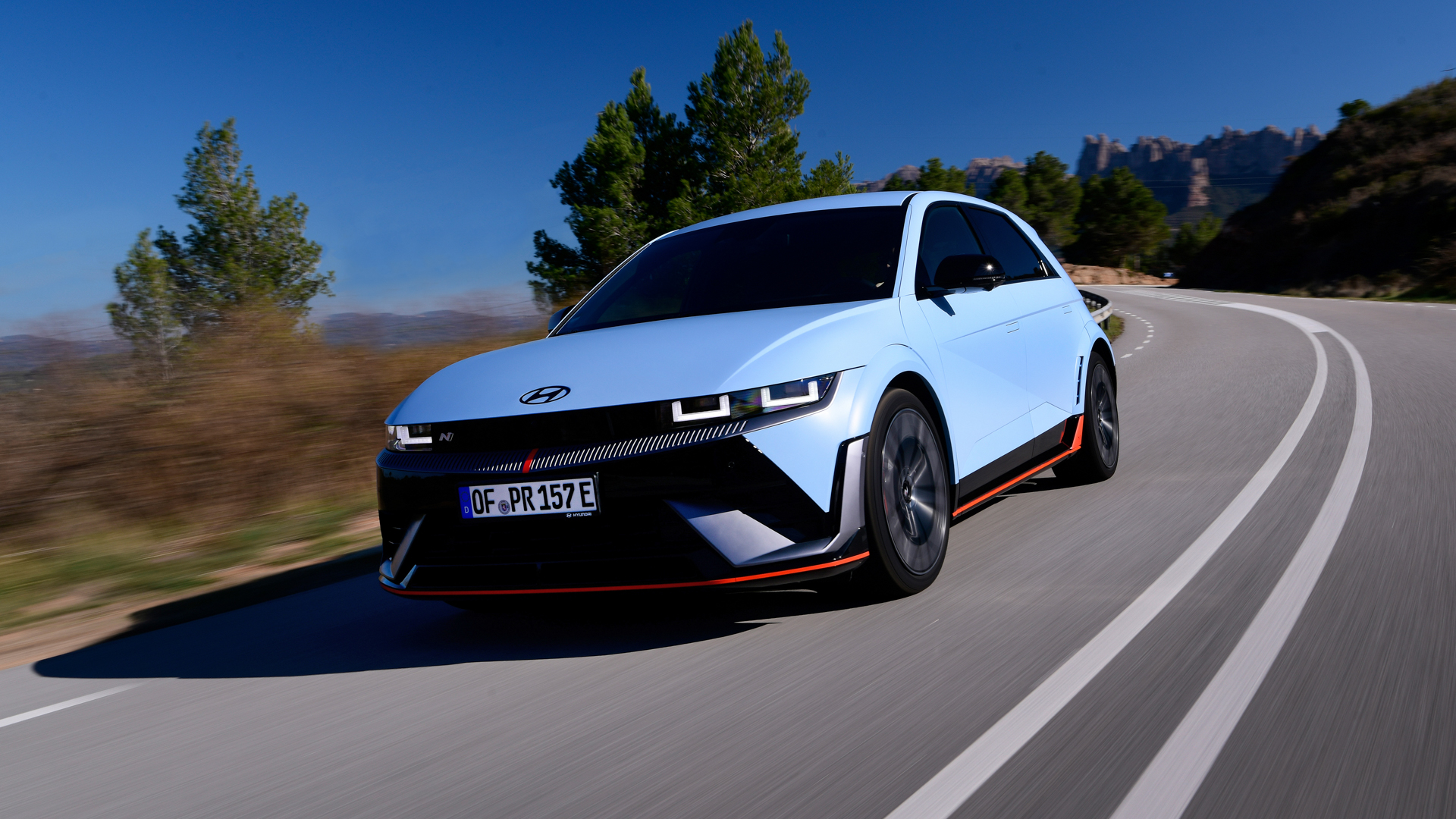
Before I get into telling you just how good the Hyundai Ioniq 5 N really is – and believe me, it’s fantastic – I need to explain the theory of the uncanny valley.
First hypothesised in 1970 by Japanese roboticist Masahiro Mori and more recently applied to artificial intelligence, the uncanny valley is a place our brains stumble through when confronted by an object possessing human likeness. Our affinity increases with likeness, but then falls dramatically to a feeling of unease when an object nears total likeness, before increasing again when true likeness is reached. When we discover the object is indeed a real human.
This is how the Ioniq 5 N and its N e-Shift system made me feel. Here is an electric car with two motors and one gear that, with the press of a button, pretends to have an engine and an eight-speed, semi-automatic gearbox. It sounds like a petrol car, revs like a petrol car and smashes into a rev limiter with a rally car-like bam-bam-bam if you’re slow to shift up to the next gear.
It even lurches slightly when you shift down, kicks you in the back on a full-bore up-shift, and you’ll be totally fooled by the exhaust soundtrack, growling and crackling away over your shoulder. There are distinctive power and torque curves too, where acceleration is far more potent in lower gears than higher, and the car will automatically down-shift if it’s at risk of stalling.
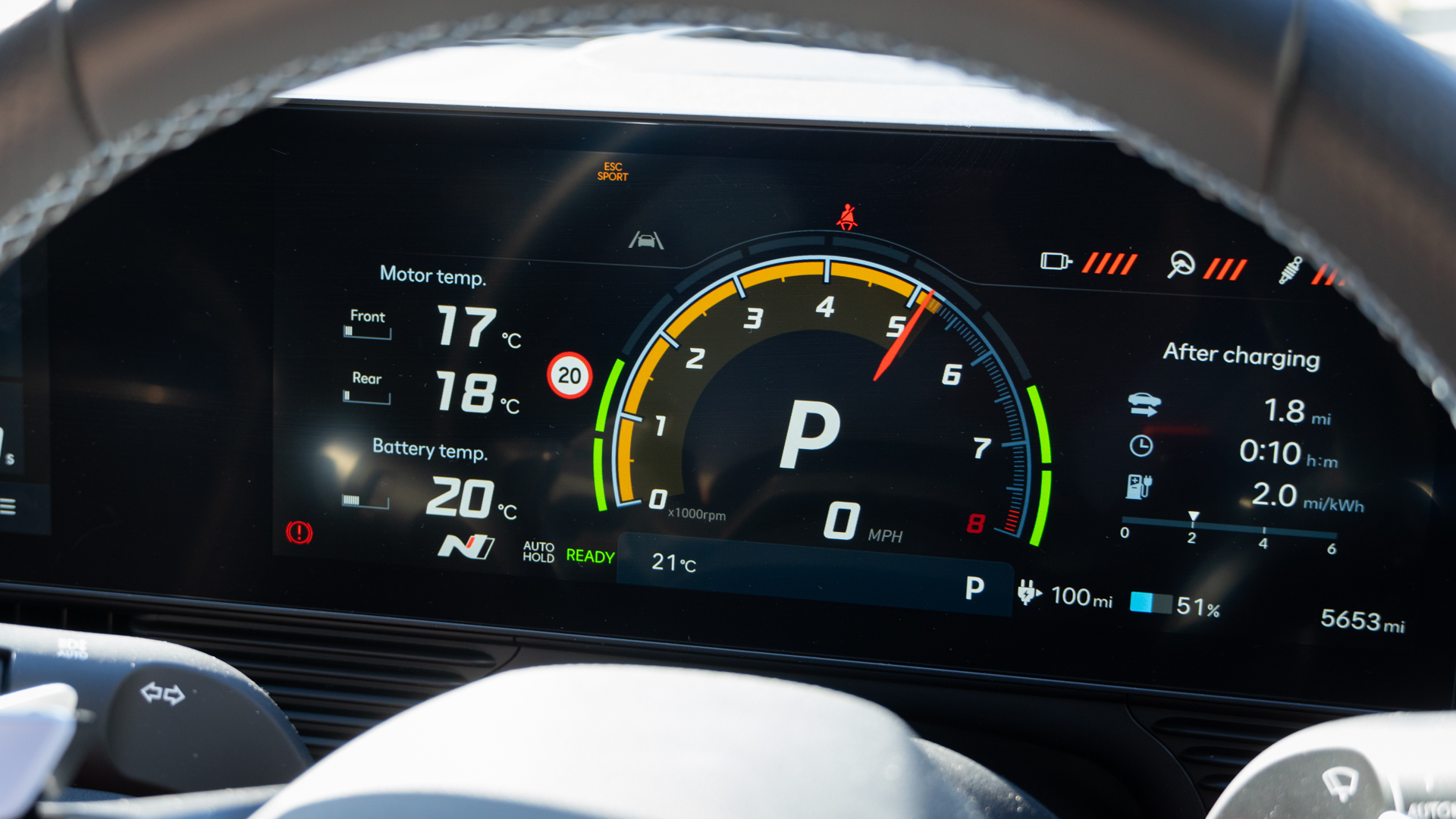
But of course it isn’t at risk of stalling. Because this is all fake. All of it. There is no engine, no exhaust and no gearbox. And despite that, it is hugely entertaining. Even before we get to the car’s physical attributes, the Ioniq 5 N will put a big grin on the face of any petrolhead fearful of the all-electric future.
So where does it sit in the uncanny valley? Its likeness to a petrol-powered car is not absolute. The sound effects use the car’s stereo, so are mostly confined to the cabin; opening a window in a tunnel doesn’t increase the volume, and childish revving on your driveway won’t annoy the neighbours. The synthetic engine has a hint of video game to it, but that’s all. So instead of filling me with unease, it hits right in the sweet spot of the uncanny valley. I know it’s fake, but I love how close it is to reality.
What about the rest of the car?
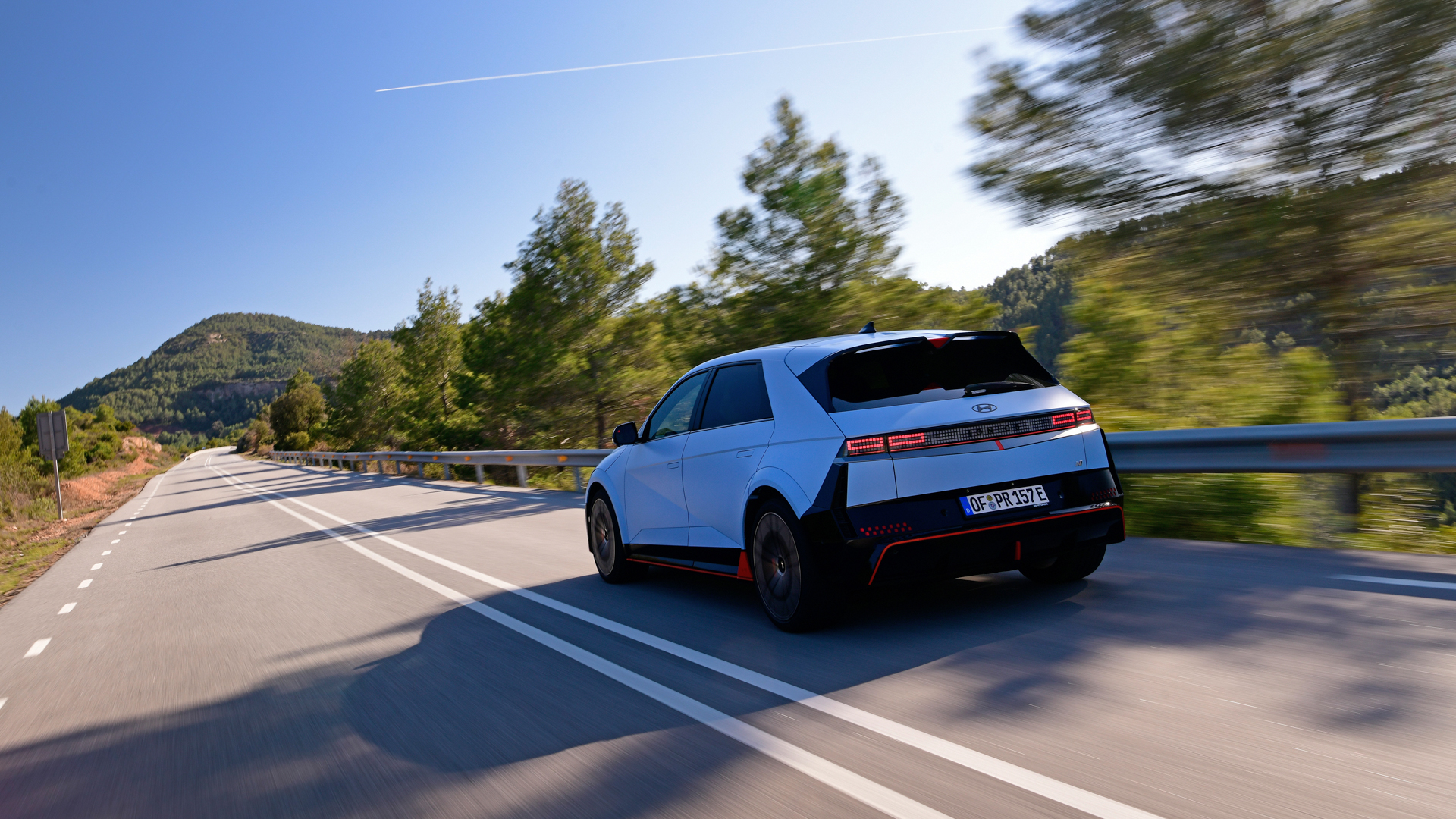
Ignore the pretend engine and you have an EV that is comfortable, refined and practical one minute, then unbelievably quick the next. It doesn’t fully blow your mind in the way you’d expect from a car with 640 horsepower and all-wheel-drive. At 2.25 tones, it’s simply too heavy for that, and doesn’t quite have the muscle to teleport in the way the Porsche Taycan Turbo S does. But with a 0-62 mph time of 3.4 seconds and a top speed of 162 mph, it’s still fantastically quick – and, more than that, it handles brilliantly.
Show it some corners and the Ioniq 5 N feels 1,000 kg lighter than it really is. It turns with eagerness and precision; the steering weight and brake pedal feel are just right (but also have three levels of adjustability to tinker with), and the whole thing feels wonderfully cohesive. There’s a Porsche-like intuitiveness to the weight of the controls. The damping is nicely judged to offer stability and confidence in Sport or Sport+ mode, then a perfectly comfortable ride in Normal. You could absolutely use this as your only car, and with everything dialled right back your passengers would have no idea they’re in something so special. That’s the magic here; the Ioniq 5 N’s massive breadth of ability.
Battery, range and charging
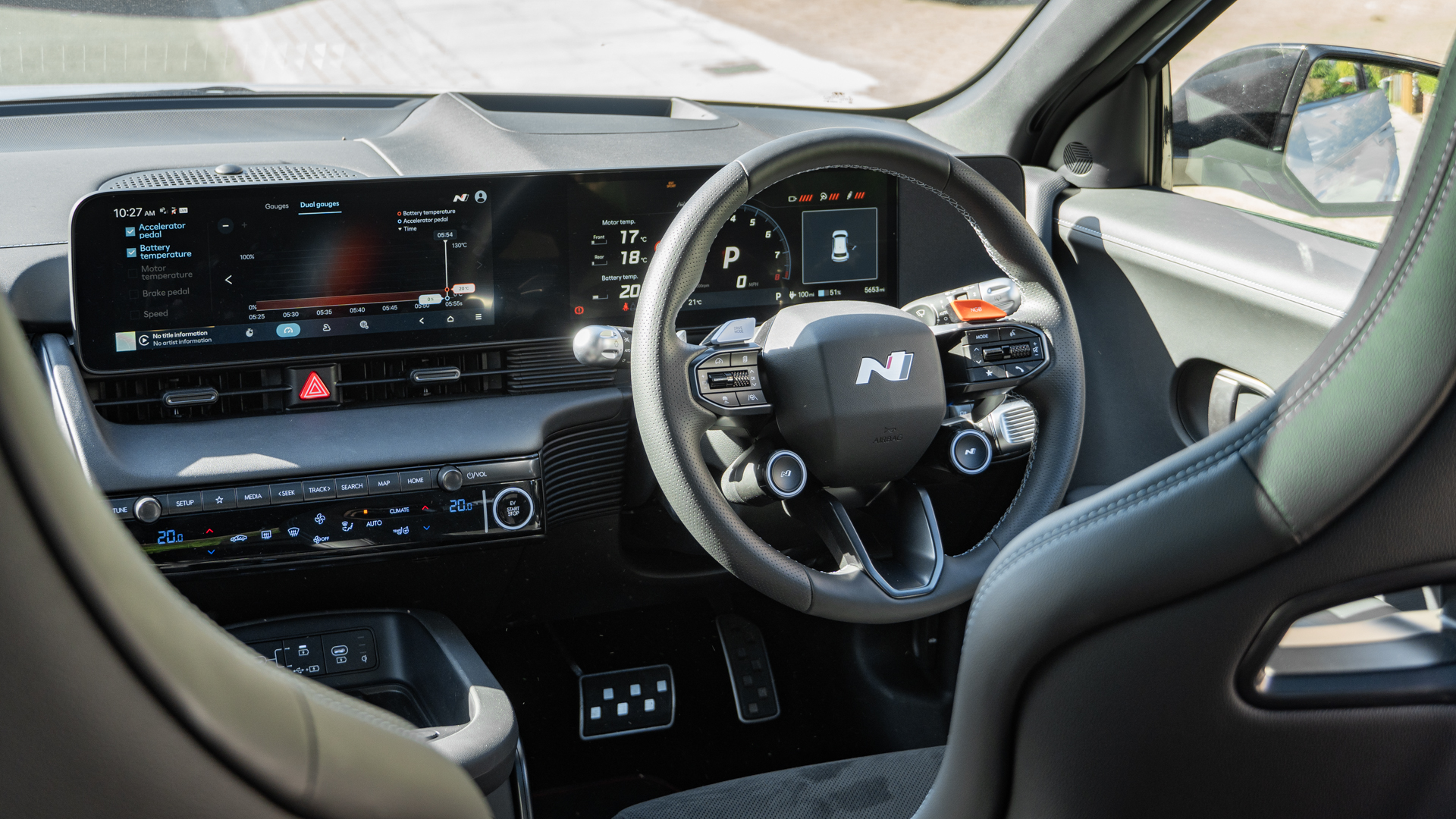
The rest of the 5 N is shared with the regular Ioniq. This means an 84 kWh battery pack, an 800-volt electrical system and a maximum charge rate of 350 kW. It’ll charge from 10 to 80 percent in as little as 18 minutes, providing you plug it into a 350 kW charger. The range of the N is less than its less powerful sibling, at a claimed 278 miles compared to 354, but drive as Hyundai intends and the real-world range is closer to 200 miles, which is starting to feel like the bare minimum for any new EV in 2024, no matter how fun. Efficiency sits just below 3.0 miles per kWh, no matter how the N is driven.
Save for the four extra buttons on the steering wheel and N mode goodies, the 5 N’s tech and infotainment is also the same as the regular car. This means a pair of large displays mounted next to each other in the same housing on top of the dashboard. The one on the right is the driver display and the other is a touchscreen for the infotainment. Apple CarPlay and Android Auto are both included.
Below, there’s a secondary touch panel for the climate control and a set of physical buttons that act as shortcuts to functions like media and navigation. In a world where cars are increasingly dropping buttons in favour of touchscreens, I applaud Hyundai for keeping some physical controls. The steering wheel is admittedly covered in them, and with the N controls it’s a confusing mess at first glance, but soon makes sense once you start exploring what the car has to offer.
N Grin Boost mode
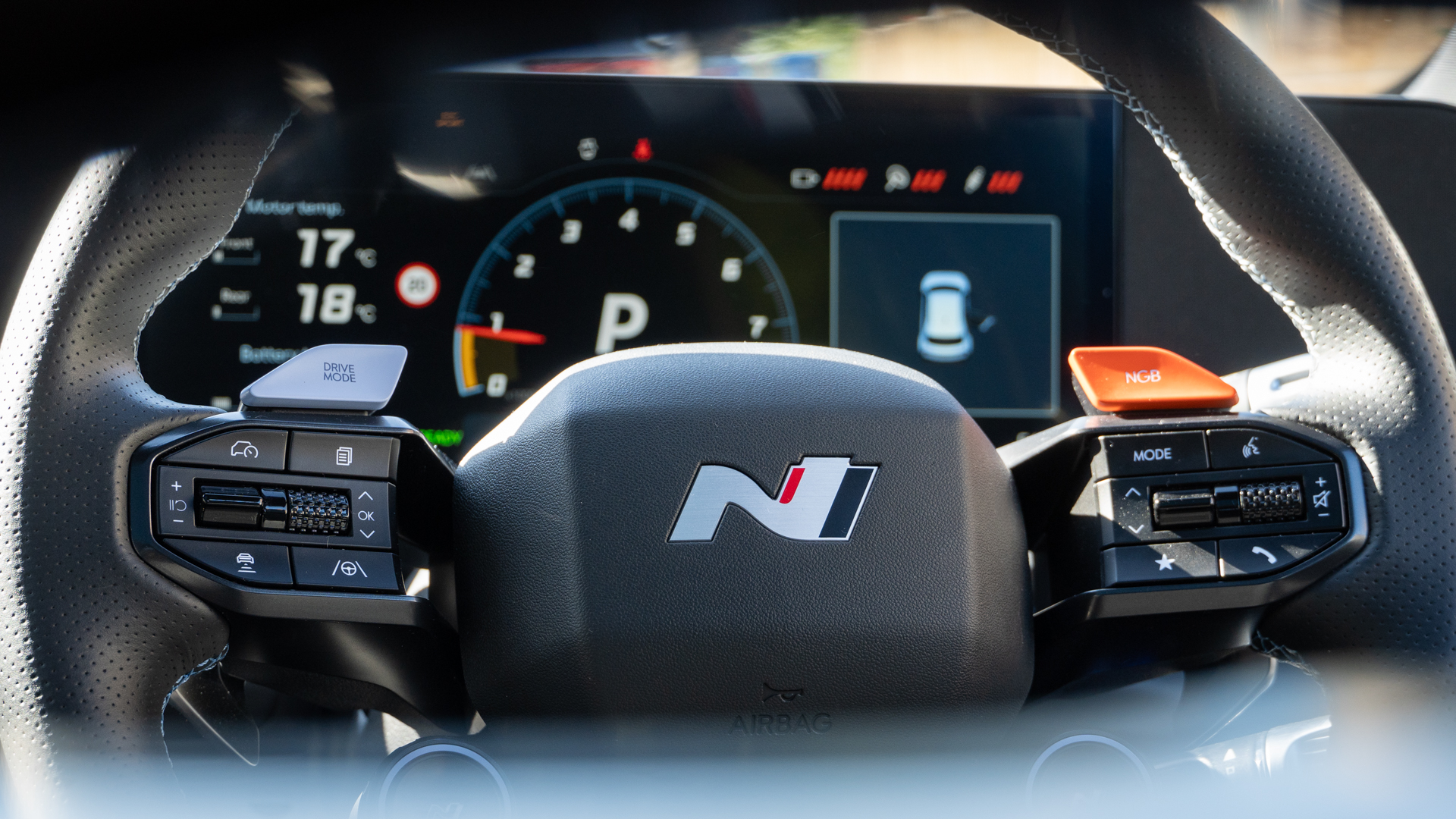
Having two N shortcut buttons is handy (press one for N mode then the other to enable the fake gearbox), as is the drive mode button and the ‘NGB’ button, which stands for ‘N Grin Boost’. Really, it does. No one can accuse this car of taking itself too seriously. Pressing the grin button unlocks the car’s full 641 horsepower (40 up on normal driving) for 10 seconds.
Paddles behind the wheel are used to adjust the strength of the regenerative braking system, as is normal in many EVs. But if you’ve got the fake gearbox enabled they become shifters like you’d find in a semi-automatic car. There’s a whiff of childish silliness to the 5 N. The steering wheel covered in colourful buttons and the pretend digital rev counter can make the car feel like a video game, but then Ferrari and Lamborghini have covered their wheels in switchgear for years, and now both have all-digital dashboards too.
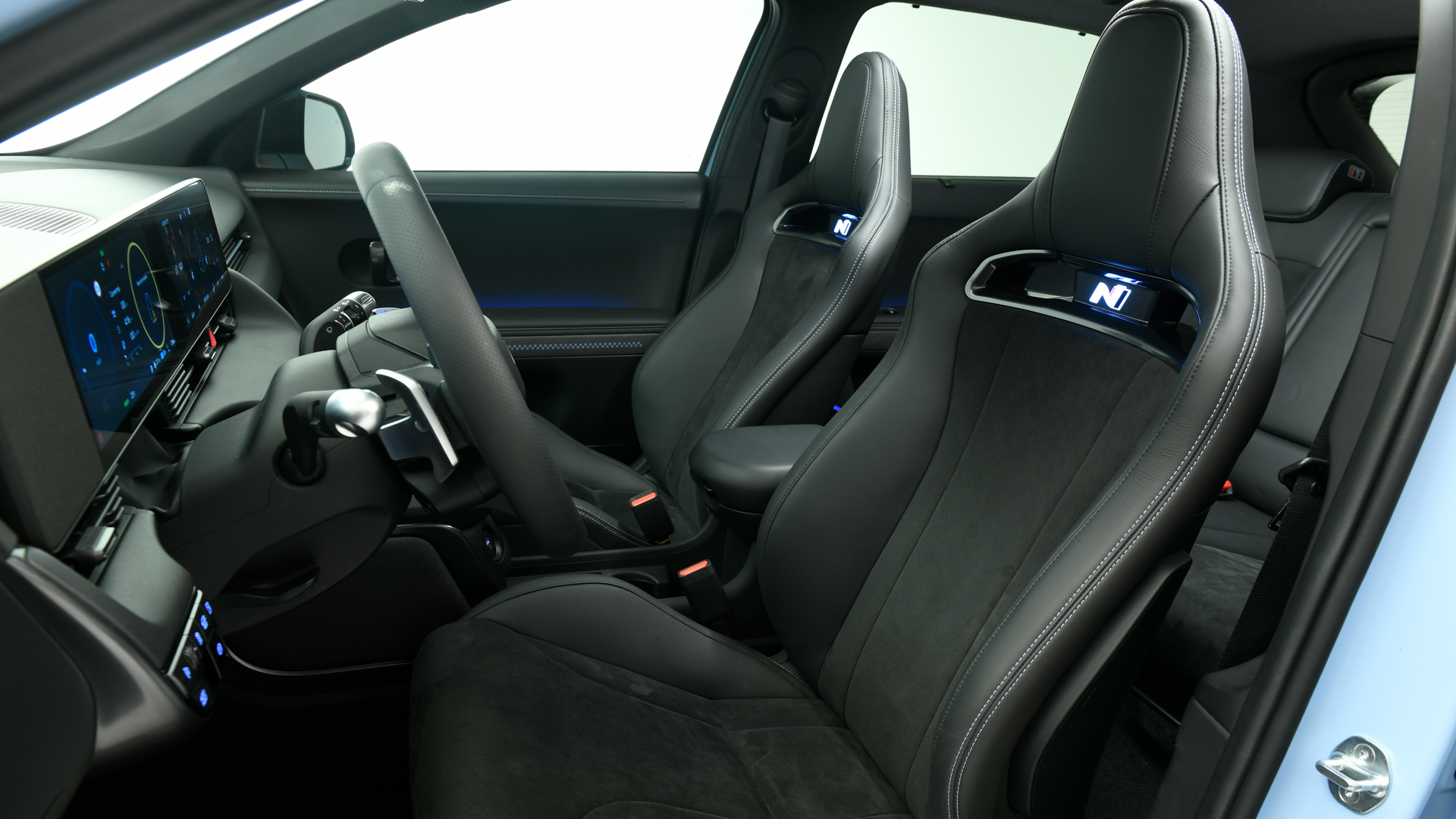
This car confirms something I’ve believed for some time; that the brains of petrolheads are wired differently to everyone else’s. Where most drivers see the clear benefits of a smooth, silent electric car with no gears to think about and no annoying exhaust sound, car lovers want to be more actively involved. We want to change gear ourselves; we want to bathe in the histrionics of what’s going on, and we crave the dopamine hit and satisfaction of getting a gear change, a corner or a braking spot just right.
If a car sounds good, we become the conductor of our very own orchestra, shifting gear for no other reason than to hear the exhaust bark and crackle. And you better believe we’ll giggle every single time.
You might complain about the 5 N being fake. A fraud. Inauthentic. But I imagine the same was once said about listening to recorded music at home instead of watching a live performance. Each has its merits, but the former is considerably more accessible. In our electric future there won’t be as many chances to enjoy a noisy, internally-combusted sports car. You’ll likely have to go to a track-day or some other organised event to get your kicks. So why not press the N button and enjoy a close facsimile whenever you like? It’s not a live arena performance, but it’s still a high-quality recording you can enjoy at home.
Price and availability
The Ioniq 5 N is available now, priced from £65,000, or £599 a month. This makes it around £25,000 more expensive than the base-level Ioniq 5, and about £15,000 more than even the flagship of the regular Ioniq 5 range.
But for that premium, buyers get considerably more power, a resigned body and interior, and of course the augmented engine and gearbox technology, plus uprated suspension and brakes. Notable optional extras for the 5 N include a glass panoramic roof and a couple of non-standard paint colours, including the pale blue seen here, which costs £900.
Should I buy the Hyundai Ioniq 5 N?
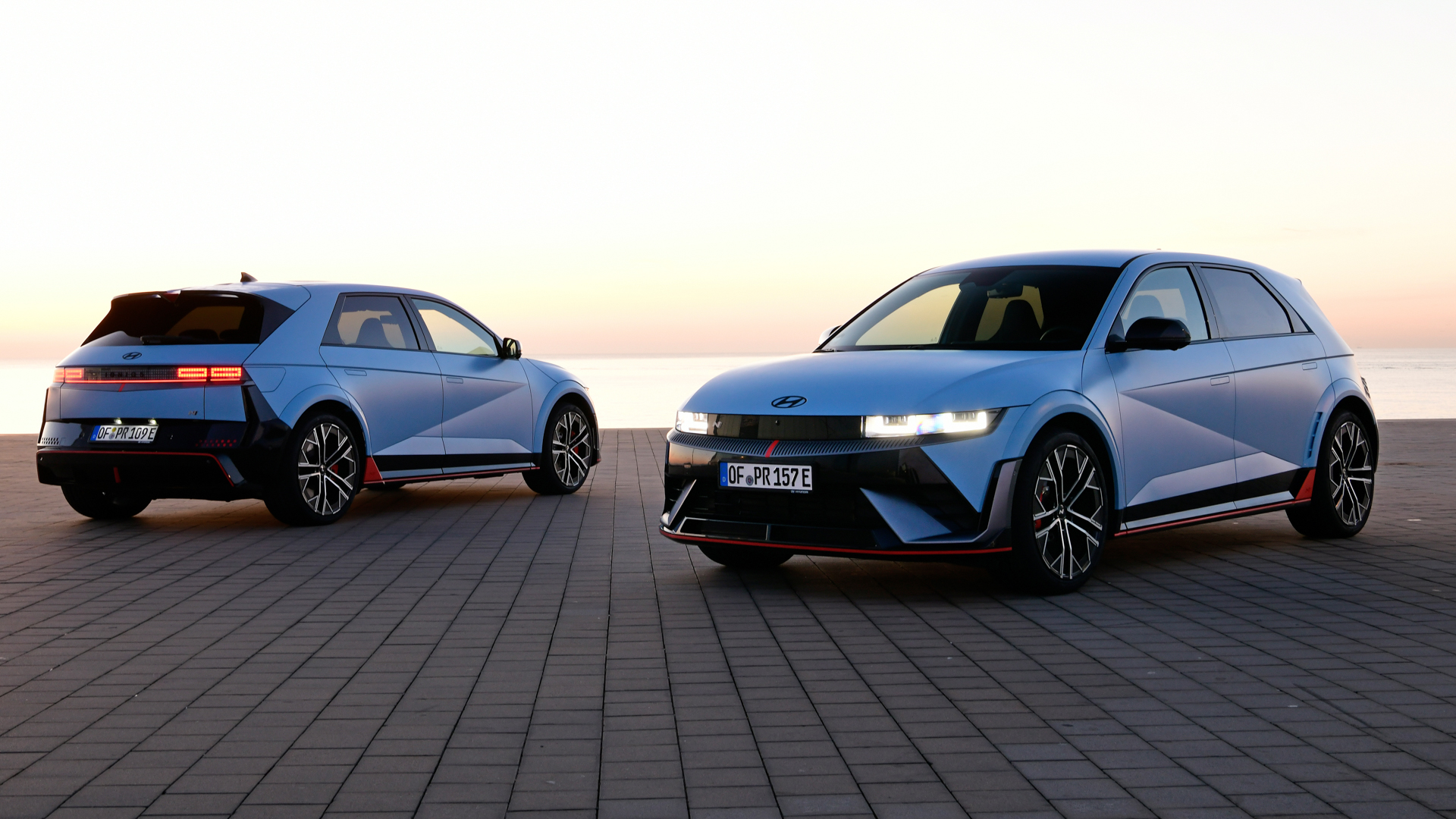
I love technology as much as I love cars. Those who only love the former won’t care for the 5 N’s clever soundtrack, while fans of the latter will baulk at the way it sounds a bit too much like a video game to be believable.
I sit between the two and, for that reason, the Ioniq 5 N isn’t just the most entertaining car I’ve driven all year. It’s the most fun I’ve ever had in an EV, full stop. Throw in the inherent practicality of the regular Ioniq 5, and how the N’s firmer ride is still perfectly comfortable, and this might just be the best mainstream electric car yet.







